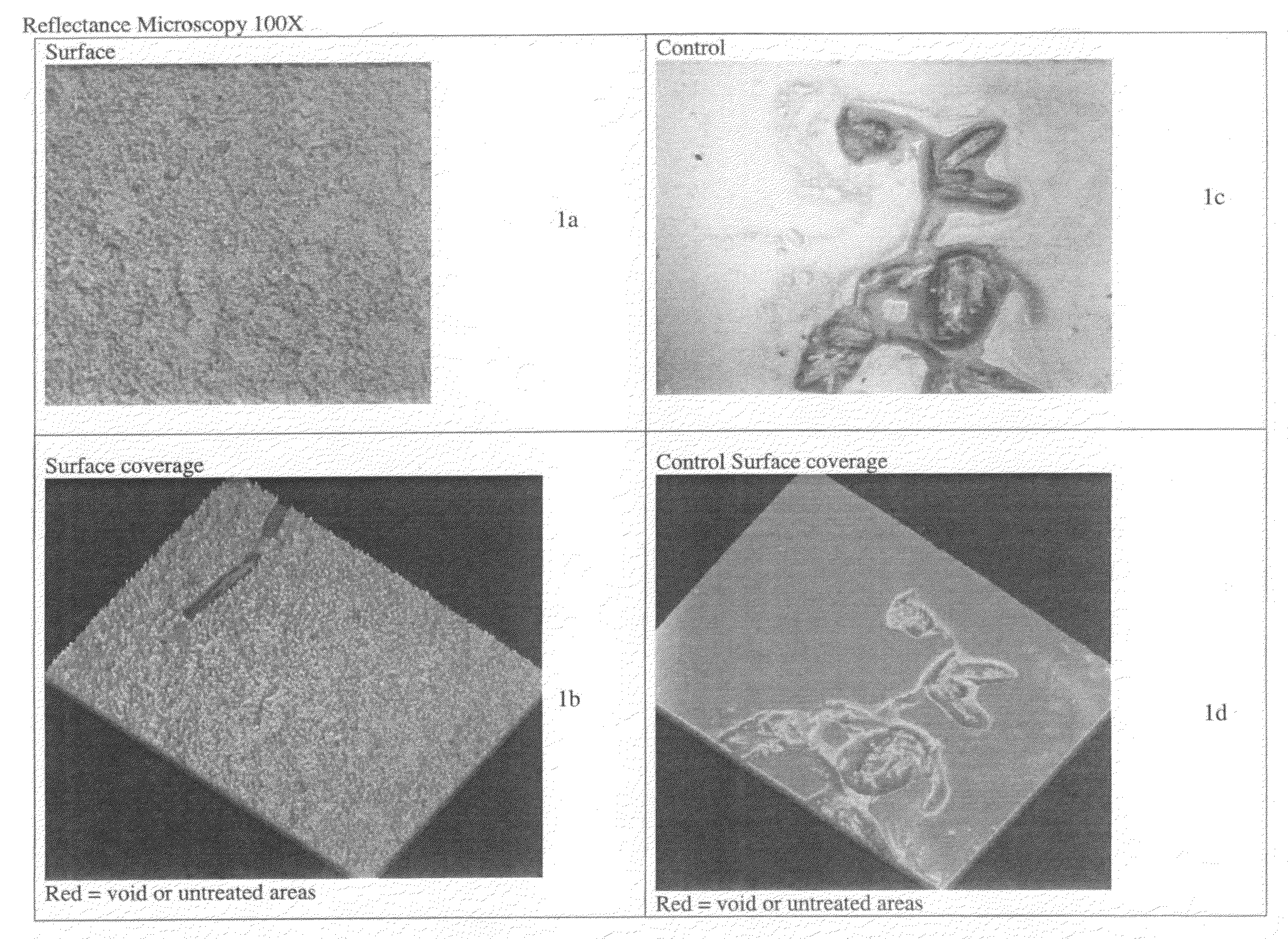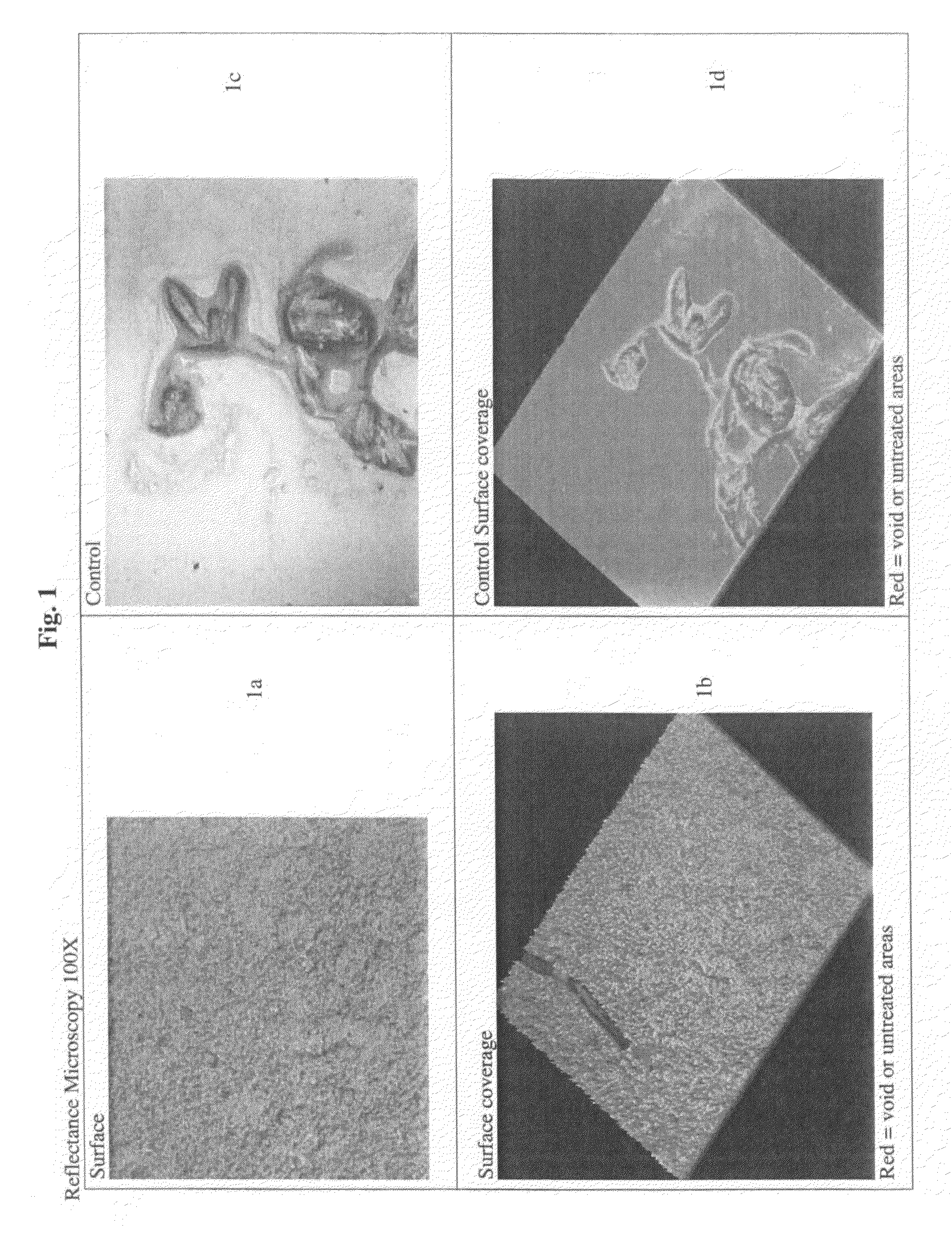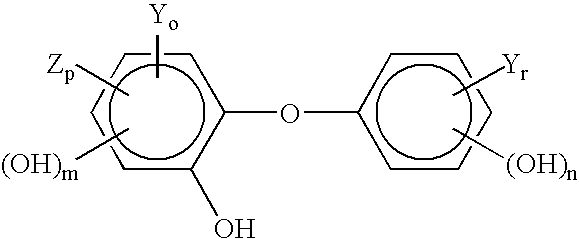Methods and articles having a high antiviral and antibacterial efficacy
- Summary
- Abstract
- Description
- Claims
- Application Information
AI Technical Summary
Benefits of technology
Problems solved by technology
Method used
Image
Examples
example 1
[0243]A composition capable of lowering surface pH in accordance with the present invention was prepared by admixing the following ingredients at the indicated weight percentages until homogeneous.
IngredientWeight PercentCitric acid2.1Waterq.s.
[0244]The composition is applied to the surface, e.g., the skin, of an individual in a quantity sufficient to create a surface concentration of at least about 10 micrograms of citric acid per square centimeter of the surface. The surface pH is reduced from an ambient value of about 5 to 5.5 to an initial value after application of the composition of about 2 to 2.5. The surface is maintained at a pH of less than 3.5 for up to about five hours after application. The surface exhibits an excellent control of viruses and bacteria.
example 2
[0245]This example demonstrates the surprising and unexpected relationship between skin pH and antirhinoviral efficacy. While prior acidic compositions were applied to the skin of the user to provide antiviral, and particularly antirhinoviral, properties, it has been found that simply lowering the skin pH is not sufficient to assure antiviral efficacy. More specifically, to achieve a highly efficacious antiviral efficacy over an extended period of time, such as four hours, the pH of the skin must be maintained at less than 4 for the entire four hours.
[0246]In this example, antirhinoviral activity is assessed 5 minutes after application of an organic acid solution having a pH adjusted over a range of pH values in order to determine the effective pH limits of the compositions. Test solutions containing 1% citric acid and 1% malic acid, each by weight, in aqueous 10% ethanol solvent were prepared. The pH values of the solutions were adjusted by the addition of triethanolamine to provid...
example 3
[0249]The following compositions were prepared.
SampleComposition (by wt %)A62% ethanol in waterB30% ethanol in waterC2% salicylic acid in 62% ethanol / waterD2% salicylic acid in 30% ethanol / waterE2% salicylic acid in dipropylene glycol / water
[0250]The samples were tested for antiviral activity against Rhinovirus 1A and Rotavirus Wa in a time kill suspension test. The following table summarizes the results of the test.
Log 10 Reduction of VirusRhinovirus 1ARotavirus WaSample30 sec1 min30 sec1 minABCComplete eliminationComplete eliminationDComplete eliminationComplete eliminationEIncomplete inactivationIncomplete inactivation
[0251]This example illustrates the synergistic antiviral effect provided by the combination of a disinfecting alcohol and an organic acid having a log P of less than one. Samples A and B show that a disinfecting alcohol alone does not provide an acceptable control of viruses. Sample E shows that salicylic acid dissolved in dipropylene glycol and water does not comple...
PUM
| Property | Measurement | Unit |
|---|---|---|
| Fraction | aaaaa | aaaaa |
| Fraction | aaaaa | aaaaa |
| Fraction | aaaaa | aaaaa |
Abstract
Description
Claims
Application Information
 Login to View More
Login to View More - R&D
- Intellectual Property
- Life Sciences
- Materials
- Tech Scout
- Unparalleled Data Quality
- Higher Quality Content
- 60% Fewer Hallucinations
Browse by: Latest US Patents, China's latest patents, Technical Efficacy Thesaurus, Application Domain, Technology Topic, Popular Technical Reports.
© 2025 PatSnap. All rights reserved.Legal|Privacy policy|Modern Slavery Act Transparency Statement|Sitemap|About US| Contact US: help@patsnap.com



